|
|
Is My 1958 Cent
The Real Doubled Die?
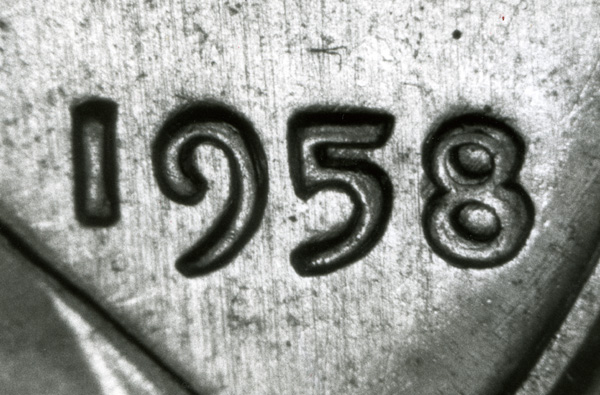
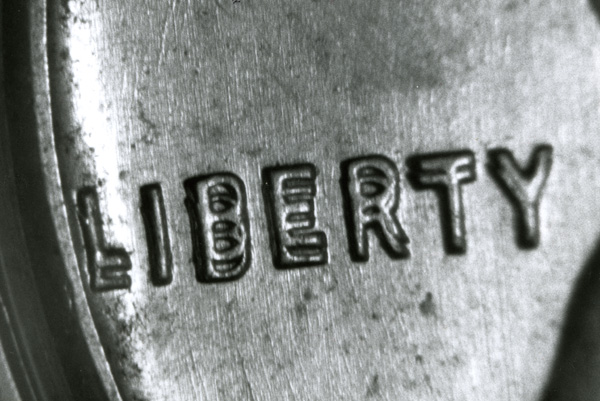

Photos Courtesy of Marilyn Van Allen
Genuine 1958 Doubled Die
Without question, one of the more frequent
questions we field in reference to doubled dies revolves around the 1958 Lincoln Cent.
There is one key reasons for this -- it is an
extremely valuable coin. In fact, we think it could exceed $100,000 the
next time one of the two examples known goes up for sale! As a consequence, folks are
naturally interested in knowing more about a coin that is of a vintage recent enough to
potentially still be found in brilliant
uncirculated rolls (which are of a date that can be found at very modest prices).
The second reason we get questions about this coin (and many
others of a similar nature) is the fact
that this date, along with many others from the entire series of United States
coins, can be found afflicted with one of the more common forms of doubling known as strike
doubling and/or die deterioration doubling.
Although worthless (and technically a form of damage -- no
matter what anybody else tries to tell you) strike
doubling is often confused by non-variety specialists as being hub doubling or what
we commonly refer to as a doubled die. Strike doubling is often referred to
by others as "mechanical doubling," "machine doubling damage,"
"shelf doubling," "die bounce," and a host of other terms.
Die deterioration doubling is the result of die wear or premature die erosion
due to a variety of possible causes including improper heat treat, etc.
The trick to learning if your 1958 cent is the valuable doubled die is to
simply match your coin to the photos shown above. If you have
the valuable doubled die, it will exhibit the doubling in all the areas exactly as
shown in the images.
If your coin is strike doubling or die deterioration doubling, (as 99.9+% of the finds for
just about all years and denominations are), it will
show doubling in varying locations, directions and strengths on the coin (which can vary
greatly from coin to coin). These areas of doubling may be in similar locations to
the genuine doubled die.
Strike doubling, (which is the result of die-bounce [due to
vibrations in the press] and occurs within the split second after the coin is struck),
will typically show as flat shelf-like extensions of the doubled characters; there will be
no open field areas in-between the doubled images (on the stronger varieties) as are clearly seen on the genuine
article here. On many extreme examples of strike doubling you will actually see the
narrowing of the original raised character from whence the lower shelf of doubling
originated when that portion of that character was smashed down into the field. This
narrowing of the original height of a character is not always obvious but is another
diagnostic of strike doubling to look for.
Die deterioration doubling will often be
rounded but unlike most classes of hub doubling, it will often surround both
sides of a character and it will fail to show as overlapping images with
distinct separation between those images..
We show typical examples of strike doubling on the dates of the 1968-S
and 1957-D Lincoln cents and die deterioration doubling on the 1953 cent and
1983-D Jefferson five-cents below.
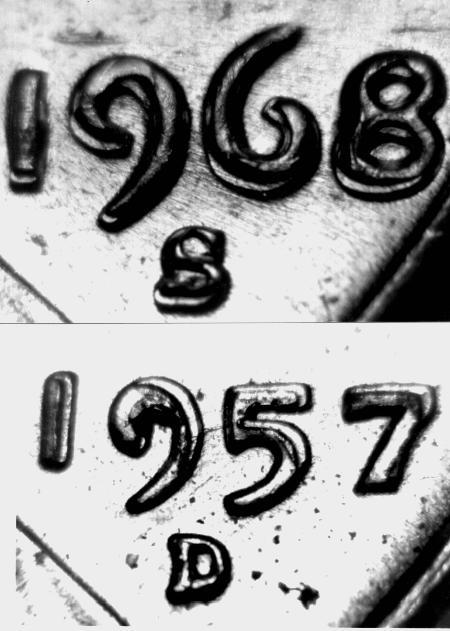
Photos by Ken Potter
1968-S and 1957-D Cents Exhibiting Strike Doubling
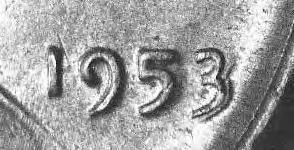
Here is a 1953 cent Exhibiting Die Deterioration Doubling
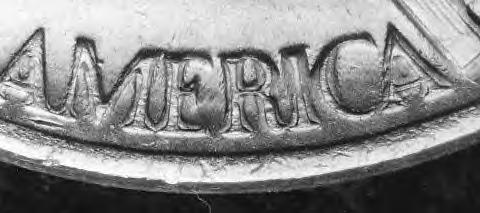
Die Deterioration Doubling on a 1983-D Jefferson five-cent piece
For more detailed information on doubled dies
and other forms of doubling, we recommend that you visit our Educational Image Gallery>
Educational Image
Gallery.
We are interested in hearing from anybody who finds a genuine 1958 doubled die!
For more detailed information on
Doubled Dies and other forms of doubling, we recommend that you visit our
Educational Image Gallery
Educational Image
Gallery
Free counters provided by Andale.